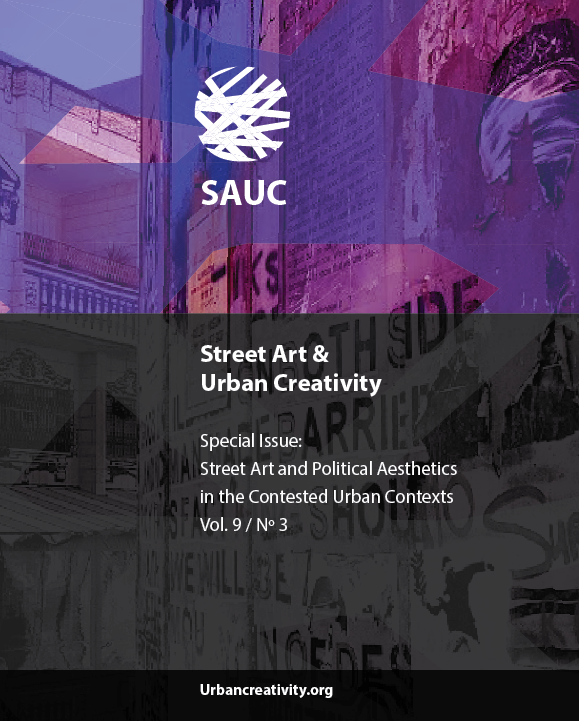Editorial Note
DOI:
https://doi.org/10.25765/sauc.v9i3.801Abstract
This special issue delves into the profound and transformative influence of a variety of artworks within urban environments characterized by political contention, with a particular emphasis on their capacity to facilitate activist engagement and dialogue. By challenging prevailing power structures, advocating for inclusivity, and reshaping the dynamics of public spaces, street art emerges as a potent political force in the process of democratizing public spheres. These unconventional modes of artistic expression, when situated in the public domain, serve as influential platforms for amplifying the voices of marginalized communities, thereby promoting civic engagement and reimagining the contours of the public sphere. Through an in-depth exploration of the communicative, participatory and political potential of street art this thematic issue entitled Street Art and Political Aesthetics in the Contested Urban Contexts seeks to shed light on the intricate interplay among. art, urban culture and civic rebellion. This exploration delves into the unique capacity of art to thrive within urban spaces that are perpetually fraught with uncertainty, challenges, and political instabilities. It encompasses discussions pertaining to the critical domains of freedom of expression, public protests, social critique, political engagement, aesthetic tactics, and urban commons in the realm of street art. These discussions underscore the remarkable ability of street art to nurture the aesthetic foundations of political and social actions within the public sphere.
Downloads
Global Statistics ℹ️
|
145
Views
|
51
Downloads
|
|
196
Total
|
|
Downloads
Published
How to Cite
Issue
Section
License
Those authors who publish in this journal accept the following terms:
-
Authors retain copyright.
-
Authors transfer to the journal the right of first publication. The journal also owns the publishing rights.
-
All published contents are governed by an Attribution-NoDerivatives 4.0 International License.
Access the informative version and legal text of the license. By virtue of this, third parties are allowed to use what is published as long as they mention the authorship of the work and the first publication in this journal. If you transform the material, you may not distribute the modified work. -
Authors may make other independent and additional contractual arrangements for non-exclusive distribution of the version of the article published in this journal (e.g., inclusion in an institutional repository or publication in a book) as long as they clearly indicate that the work was first published in this journal.
- Authors are allowed and recommended to publish their work on the Internet (for example on institutional and personal websites), following the publication of, and referencing the journal, as this could lead to constructive exchanges and a more extensive and quick circulation of published works (see The Effect of Open Access).













